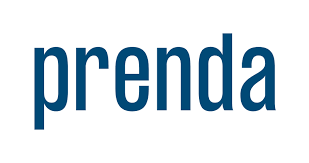









Increased user engagement by 35% through redesign of main app interface, focusing on intuitive navigation and visual hierarchy.
Created 50+ reusable UI components, reducing development time for new features by 40%.
Championed accessibility in design, ensuring all projects meet WCAG 2.1 AA standards.
Zoe led the UI redesign for a popular fitness tracking app. She implemented a new color scheme and typography that improved readability and user engagement. The redesign also included a customizable dashboard, allowing users to prioritize their most important health metrics.
Improved app store ratings from 3.2 to 4.7 stars through user-centered redesign of e-commerce mobile app.
Reduced customer support tickets by 25% by simplifying the checkout process and improving form design.
Developed and maintained a comprehensive UI style guide, ensuring consistency across all product lines.
Rafael designed the interface for a new AI-powered personal finance management tool. He created intuitive visualizations for complex financial data and implemented a clean, modern aesthetic. The project involved extensive user testing to refine the interface for maximum usability.
Increased conversion rates by 20% through A/B testing and iterative improvements of landing page designs.
Reduced onboarding time for new users by 50% through redesign of user tutorial and implementation of progressive disclosure.
Collaborated closely with UX researchers to incorporate user feedback and behavioral data into design decisions.
Amelia worked on redesigning a popular task management application. She introduced a new system of visual cues to help users prioritize tasks more effectively. The project also involved creating a night mode feature, which was highly requested by users.
Designed UI for 3 award-winning mobile apps, each achieving over 1 million downloads within the first month of launch.
Improved team efficiency by 30% through implementation of a new design system and collaboration workflow.
Mentored junior designers, providing guidance on best practices in UI design and prototyping techniques.
Kai designed the user interface for a revolutionary augmented reality education platform. The project involved creating intuitive gestures for interacting with 3D models in space. Kai’s design made complex educational concepts more accessible and engaging for students of all ages.
Increased user retention by 45% through redesign of onboarding experience for SaaS platform.
Reduced cognitive load by 30% in complex data visualization dashboard, as measured through user testing.
Pioneered the use of motion design in the company’s products, enhancing user understanding of state changes and system processes.
Nora created the UI for a cutting-edge smart home control system. She designed an intuitive interface that allowed users to control multiple devices from a single dashboard. The project also included designing adaptive interfaces for various screen sizes, from smartphones to wall-mounted displays.
With our extensive candidate network and dynamic team search approach, Redfish recruiters can greatly reduce your time to hire compared to in-house hiring processes.
Redfish recruiters handle every step of the process, including finding talent, screening candidates, scheduling interviews, conducting reference checks, and negotiating the offer, freeing up your in-house HR staff to focus on their other responsibilities.
We form the same in-depth relationships with clients that we establish with candidates, taking the time to fully understand your company and needs and giving each client a single point of contact for all communications.
We understand the roles we recruit for inside and out, whether that’s the technical jargon familiar to engineers and programmers or the skills that make an exceptional sales or marketing hire. When we send along a candidate, you can trust they have what it takes to excel.
With 20+ years in the recruiting industry, Redfish Technology has built an extensive network of connections and candidates, and our reputation precedes us. We’re a recruiting firm top talent wants to work with, giving you access to better talent than you’ll find from other services.

UI (User Interface) design focuses on the visual elements and interactive components of a product, while UX (User Experience) design encompasses the entire user journey and overall feel of the product. UI designers are primarily concerned with how the product looks and functions.
A UI Designer should be proficient in industry-standard tools such as Figma, Adobe XD, or Sketch. Familiarity with prototyping tools like InVision or Principle is also valuable.
While not always necessary, basic knowledge of HTML, CSS, and JavaScript can be beneficial. It helps designers understand technical limitations and communicate more effectively with developers.
Typography is crucial in UI design. It affects readability, hierarchy, and overall user experience. A good UI designer should understand font pairing, sizing, and how typography contributes to the product’s personality.
UI Designers often create and maintain design systems or style guides. These include reusable components, color palettes, and typography rules that ensure consistency across web, mobile, and other platforms.
Accessibility is crucial in UI design. Designers should create interfaces that are usable by people with various abilities. This includes considerations for color contrast, text size, keyboard navigation, and compatibility with screen readers.
UI Designers create flexible layouts that adapt to different screen sizes. This involves using grid systems, considering breakpoints, and sometimes creating separate designs for mobile, tablet, and desktop views.
User testing is vital for validating design decisions. UI Designers often create prototypes for testing, gather feedback, and iterate on their designs based on user responses and behavior.
UI Designers stay updated by following design blogs, attending conferences or webinars, participating in design communities, and continually practicing and experimenting with new techniques.